
Sunrise/Sunset for 5th May: Specifically for Meerut . Twilight start - 5:11am Sunrise - 5:36am Sunset - 7:00pm Twilight end - :7:25pm. Meerut Latitude : 29.5 deg N, Longitude : 77.05 deg E.
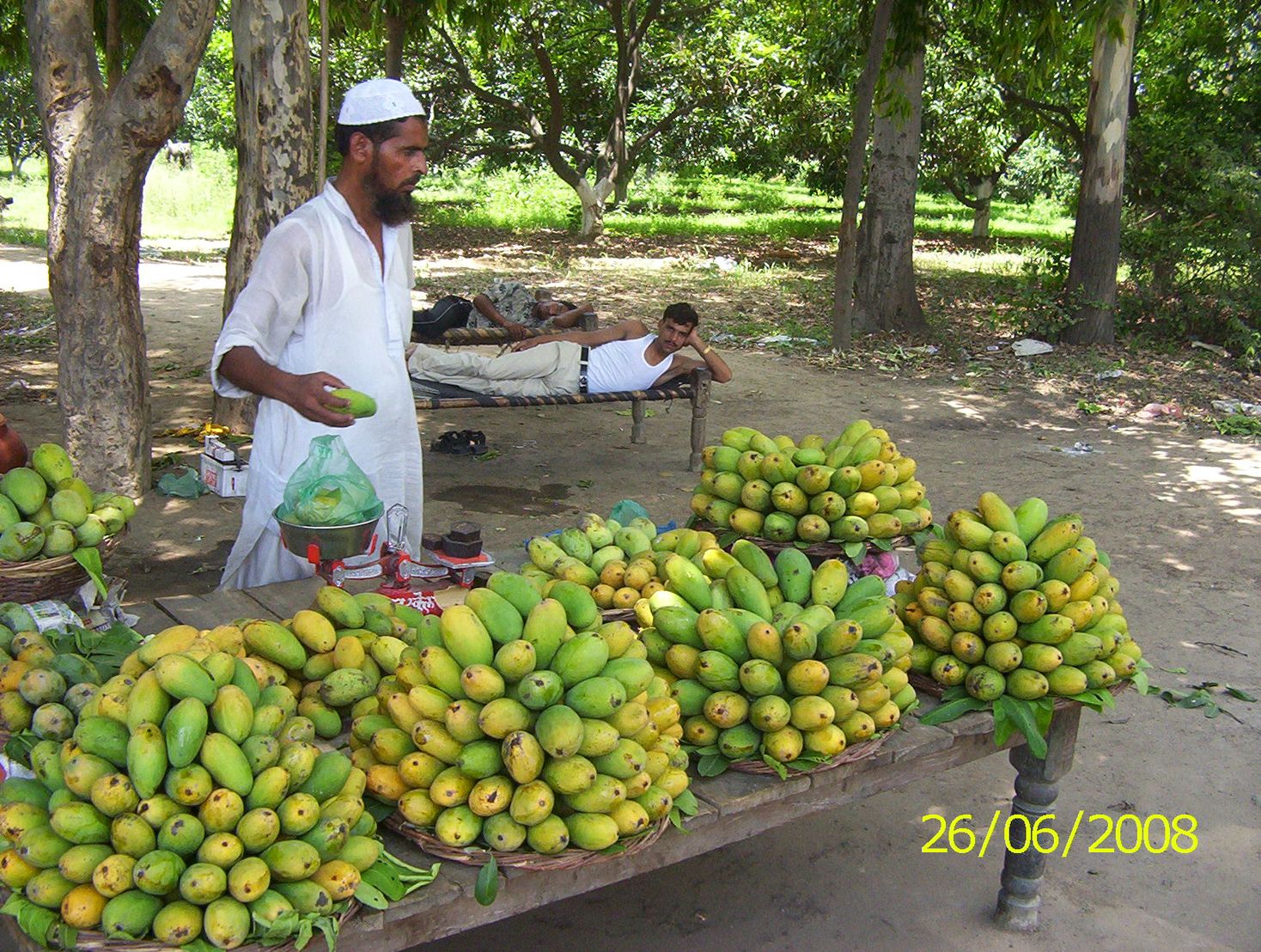
This could appear to be a scene of idyllic indolence. However there are a lot of things that are not visible . This is a dawn to to dusk occupation. Mangoes have to be plucked off the trees, birds have to be kept away. Someone has to be at the cart all the time. Children of the neighbourhood who just want one or two are welcome. The season will last till end of July or mid-August. An elevated expressway here would bring misery to many, and would certainly look worse than the existing tree-lined road. A few feet extension on either side could ease the increasing traffic.
We have not seen a June like this for years! It exceeded 40 deg C only on a few days. Today July 1st is a clear day. A little too clear. Which means all the reserves of happiness are going to be depleted. In the fifties we could hear words of joy about the Sun from Irish Brothers and British Missionaries. We generally considered them to be superior people, but had strong doubts about their sanity when they expressed positive thoughts about the blazing Sun.
They were discussing crude oil prices on NDTV. Pranoy Roy repeatedly mentioned that the taxation component in what we pay at the pump is as high as 50%. In other words the amount we pay as taxes is the same as the cost of the petrol/diesel. 100% taxation !!! And yesterday(May 31st) there was news about the Petroleum minister meeting the Finance minister, requesting him to lower taxes. There seems to be a lot of hesitation about this . After all who can refuse a free lunch. They say there is a thin red line between Madness and Genius, perhaps between Stupidity and Bravery... Is there one between Theft and Tax? A closer look at 100% taxation reveals aspects which are not obvious in a cursory view. Supposing the cost price of Petrol goes up by Rs. 5/=. Then the amount of tax goes up by a similar amount. Why can't the Finance ministry be content with a fixed amount per liter ? When the tax component is 100%, how can they talk of subsidies? But then we are very adept at being comfortable with nonsense and self-contradictions.
Oil companies making losses? A little belt tightening could easily solve that. These are oozing with fat.

They are cleaning the Abu ka Nala again . Last it was done was in 2001. With Excavators and something called a Porklane machine. The people doing it are not aware that just about 6-7 ft below the water surface is a brick lining. The entire Bombay Bazaar shopkeepers know that a little more than a decade back this brick lining used to be visible. The problem is that with these powerful machines they are digging up the brick lining too, which need not be done. The nala used to be cleaned every week or two. An item in Dainik Jagran says about 3 crores have been sanctioned very magnanimously for some excavators and a Porklane machine. This city pays that much in Excise and local taxes on Diesel and Petrol EVERY day. The cleaning of the entire nala could take 10s of crores , but MUST be done. None of the feeder drains flow into the Nala as the level is much too high, and there is stagnant water all over the city. Hence you can just imagine what a large area ( not merely the cantonment ) is vulnerable to rats, mosquitoes, sickness and disease. And in this region you can see the same thing in Modinagar. Of course, cleanliness and other basic requirements of the populations are conveniently labeled as either elítist or populist both these words take the Government of the hook from delivering what it is paid for. Elítist has a socialist undertone and populist goes back to monarchical times. One does not expect people in the media to know that democracy by definition is populist. The word also implies that Politicians and Babus know better :). Another word used often in similar vein is 'unauthorised'. Everything which came after 15th August 1947 is 'unauthorised':). We were a nation of 33 crores at that time, we are over 100 crores now. That makes for about 67 crores unauthorised :).
If you run across someone in Government and mention the filth , they always have a good explanation. 'The people are throwing too much polythene in the garbage'. Well take a look at what has been taken out from the Nala , see how much polythene you can find.
However one can see distinct signs that teh town is cleaning up, even without dustbins. People still unload garbage at the points where dustbins used to be placed some two decades back. India must be the only place on Earth where they try to keep a town clean without dustbins.
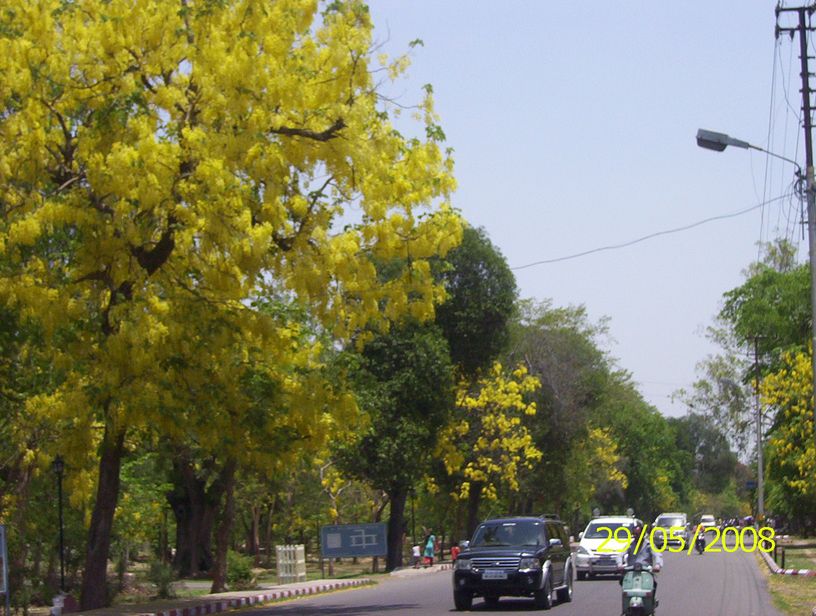
If you are still reeling from shock of wondering "how can a place be so filthy?" then maybe pictures of the Mall with Amaltash in full bloom may take your mind off that.
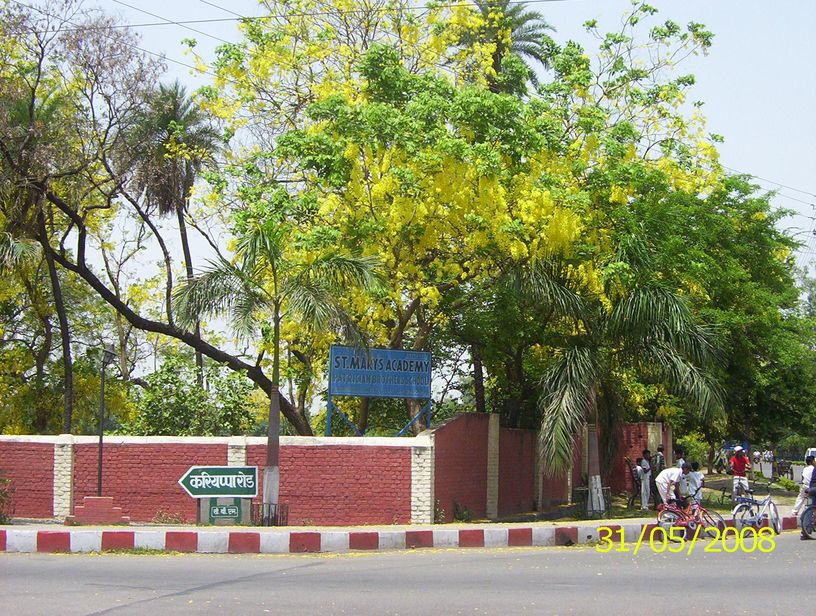
St. Mary's is still reeling under an extortionate tax much larger than their income which was slapped on them in 2001 by the then half-wit Sub-area-commander a Nambiar ( who was thrown out of the army ). They will now try to move out of the Cantonment since East India Company rules ( dated 1836 ) still in force do not allow them to progress and develop. You need permissions for everything. You could locate the Old Grant in list of references at the bottom of the page, this actually has discriminatory words regarding the natives and is still a valid law ( of 1836 vintage - i.e pre-mutiny).
Around May 10th a train highlighting the Mutiny events had parked here in Meerut for 3 days. People had to stand in queues for almost 3 hours to get a look at the very well done display. A book was also available in Hindi and English. It is called '1857 The Great March - Meerut to Delhi'. Thus again by focusing on events it diverted attention from the cause which was extortionate taxation of farmers ( the US declaration of Independence was the result of the similar cause -'Taxation without Representation' ). It has at least one error in fact . Walter Reinhardt of Begum Sumroo and Sardhana fame is mentioned as a rebellious employee of the East India Company. Reinhardt was from Luxembourg ( not England ). And this points out a much overlooked fact - that many Europeans were employed by Nawabs , and Rajahs in their State forces. The Sardhana graveyard has graves of Poles , Czechs and Italians. At the back of the book is a list of various altercations ( far from complete) right from the time the East India Company got into seriously collecting taxes ( through collectors - yes ICS people ). These confrontations never really ended with the mutiny. However later on the company was much richer and possessed a much larger army, and like was far better organised, we Indians really did not understand the term in those days.
A strange thing happened on 30th April. Lines from an interview of an Ex-prime minister of England Margaret Thatcher were included in many TV channels as well as in many papers. So what is so strange ? The interview took place more than 20 Years ago in 1985.
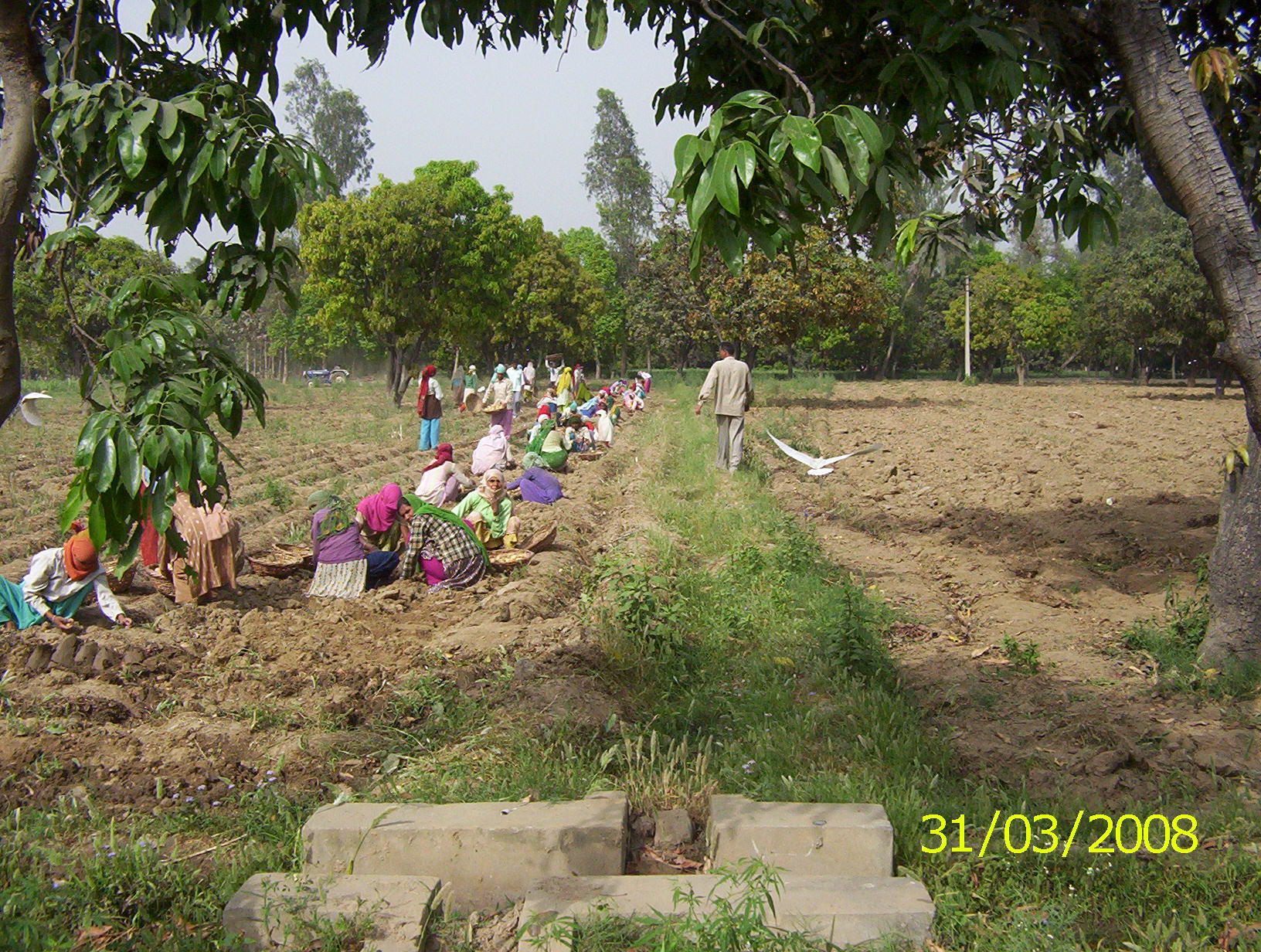
There are problems in paradise too. You may be aware that the moment you even whisper a number, Paradise vanishes. Recent local papers mentioned that there is a glut of potatoes in all the areas nearby. All cold storages are refusing space. Potatoes were selling at a little over Rs. 5.00 per Kg in the market. The farmer was not getting more than Rs.2.60 for his efforts. This at a time when there is a shortage of wheat and rice. Even so I would rather take pictures of fields and trees rather than multi-storied buildings, flyovers and traffic jams.
To each his own. Most people's heroes are those with an unlimited bank balance, sitting in air-conditioned comfort, flicking specks of dust from their ironed suits. Mine are these people who are in the fields when the temperatures reach 45 deg C ( like now mid-May).
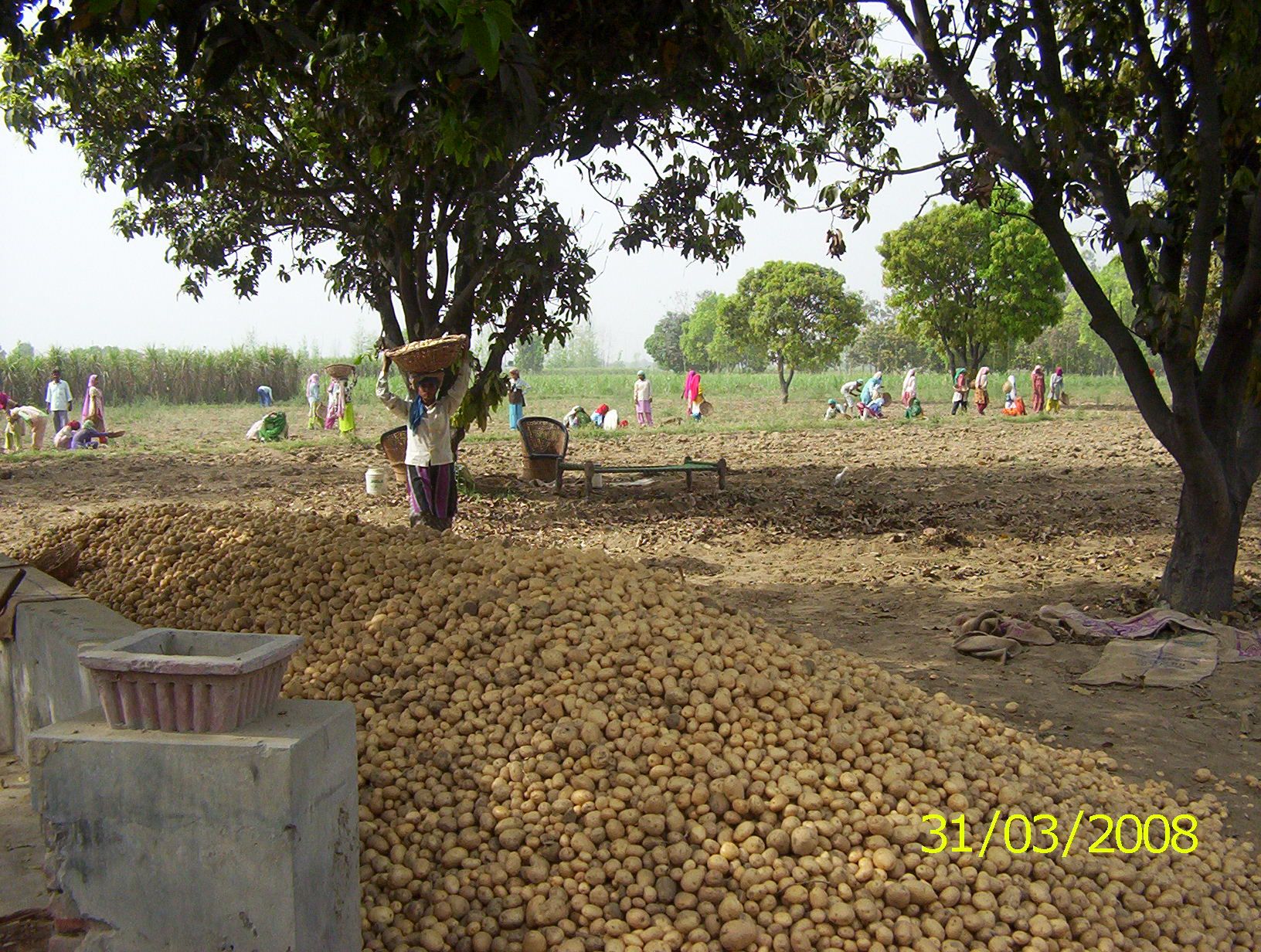
Barring the tractor, this could be a scene painted 300 years earlier ( Potatoes and chillies were brought to India by the Portuguese in the 17th century ). More about the low value of agricultural products. Not far from here in many village shops you can pick up a packet of potato chips at Rs.20/- for 100 gms. or about Rs. 200 per kg. Which is about
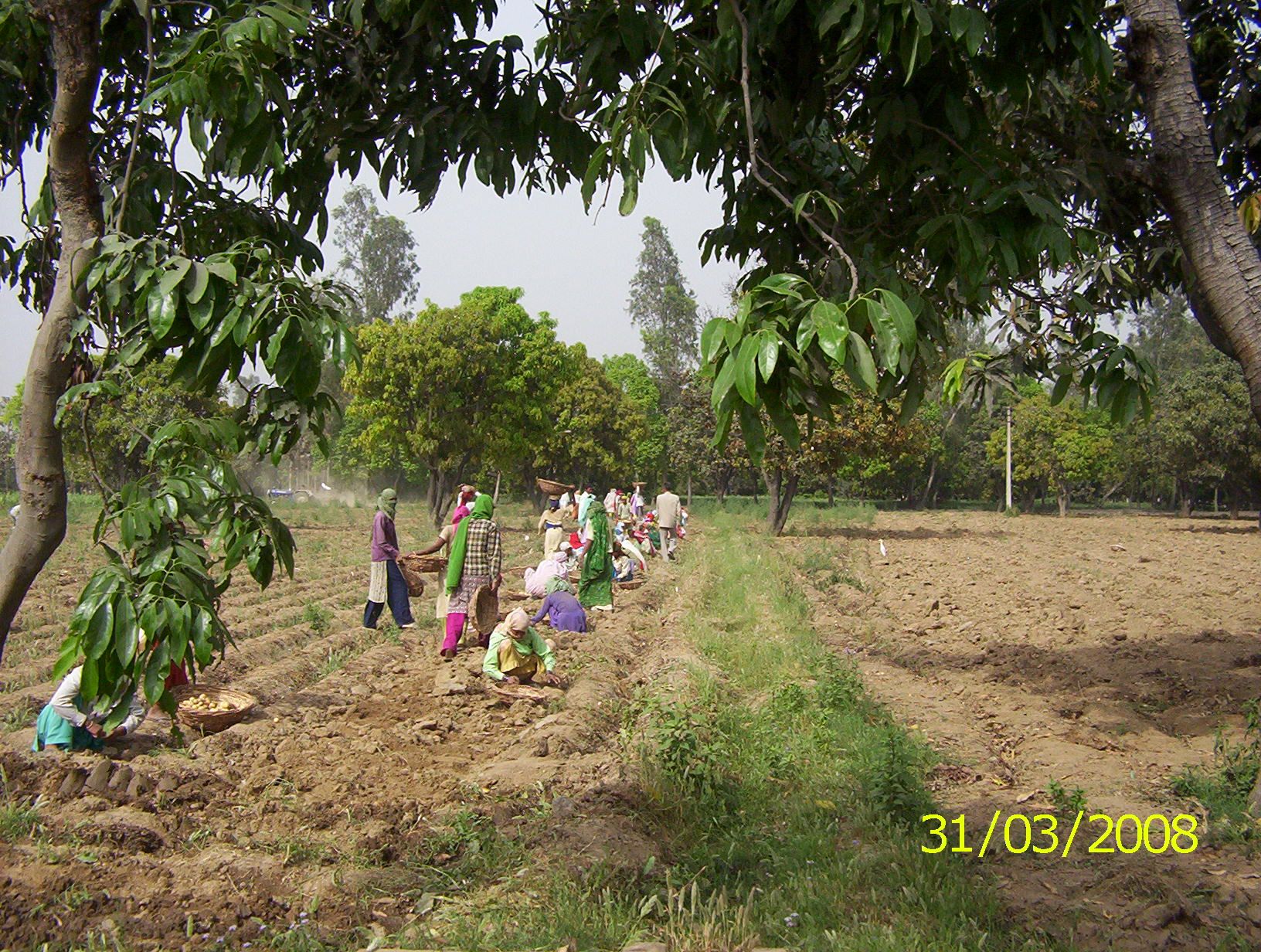
An electricity pole is also visible in one of the pictures. It is for a tube-well nearby. Our villages are far from electrified. With barely 4 hours of electricity. So even those who first got connections have got them disconnected due to enforced minimum charges.
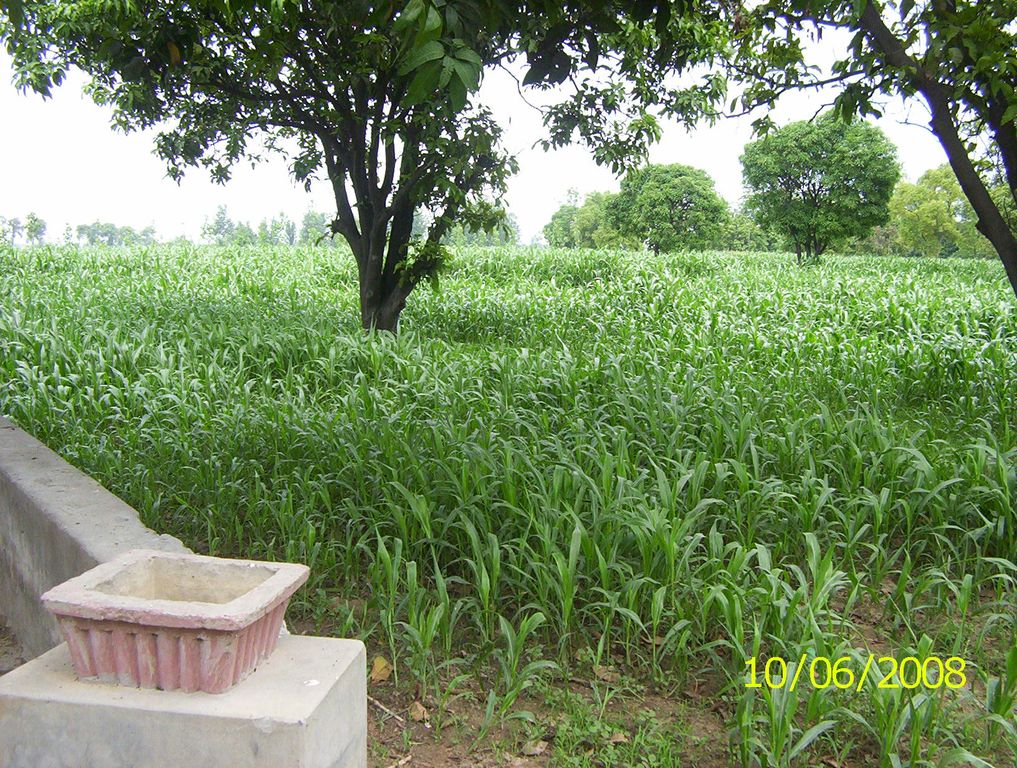
Same place 2 months later.
Agriculture throws up a lot of combustible material. This could be use to generate a lot of electricity with mini-turbine generators the same way as Sugar mills do. And proper electrification could make Industry zoom due to a surge in demand from electrical products.
Quite unbelievable that it was rural India which paid for Calcutta's opulence( it was the East India Company Capital with head quarters in Fort William ). It was ranked just behind London and Paris in the mid-19th century. And even today they are not provided basic Municipal services, leave alone Electricity.
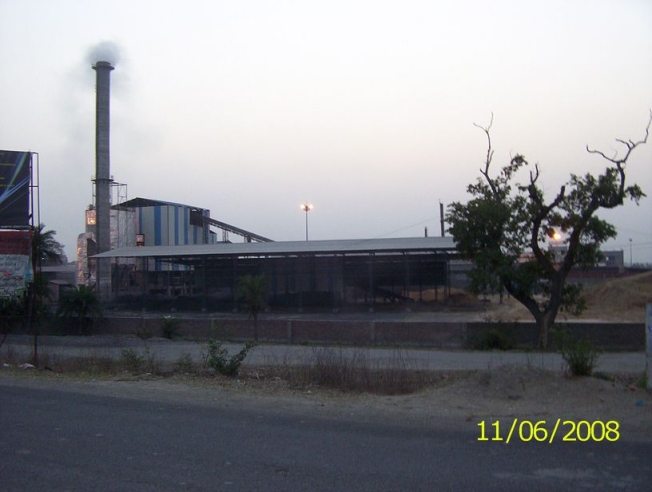
This plant is not far from where the above pictures were taken. To the right of the picture you can see a small portion of the hill of agricultural waste delivered to the plant. They have more than a few weeks reserve, and have to refuse trucks which appear without prior appointment. This Power plant is NOT attached to a sugar mill where this method( power from burning husk ) has been the standard procedure for at least 70 years. There is much less air pollution than coal based plants like the C power station in Delhi. In any case Employment should get higher priority than Environment in India.
Imagine this, if plants like this come up in rural areas an enormous boost can be given to the well-intentioned Rural Employment scheme. Quite a few people are required to man the plant . Then rural folk will also be paid for the combustible stuff they bring.. And Electricity just stimulates demand for a hundred other things. Of course fairly intensive feasibility studies are required. Somehow an enormous number of Power schemes just end up in the trash-can as they collide with the thinking box which says 'Electricity can only come from a grid'. In the US even not very remote areas are provided Electricity through co-operatives. The broadest statement of the Indian Paradox has just got to be this - 'So much to be done , so many people to do it . Little gets done and so much unemployment' . Just provision of Electricity, basic sanitation and sewage to the rural areas could create waves of sorely needed employment.
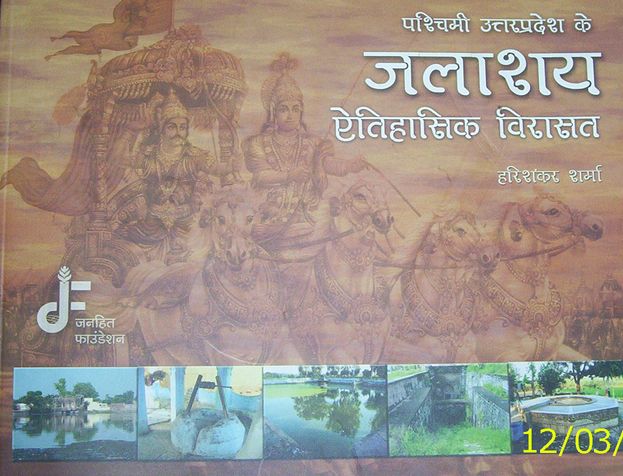
Sad. This is one book you will never see in bookshops or railway station magazine stands. It is very regional in outlook, and it is also the best book I have ever read. ( For some reason regional is a bad word, among those who have read so many books, that nothing is visible any longer ). "Wells" mean nothing to most of the urban population today. Less than half a century ago they were important everywhere, even in the ghastly places they now call Metros. The book has traced the history of an amazing number of wells of West UP. Be warned only the address of the publishing organisation and the website is in English. The funds for publishing came from the Cultural department of the Royal Netherlands Embassy. Where do the hundreds of thousands of crores the Indian Government collects, go to?
Want to read this then contact Janhit foundation, D-80 Shastri Nagar , Meerut.. Email: janhitfoundation@gmail.com , website: www.janhitfoundation.in Phone : 0121-2763418, 40044123. . Price ? Priceless. This book is really meant only for those who believe fact is more interesting than fiction. Read both the Introduction by Anil Rana and the preface by Harishanker Sharma. The book is not a hackneyed lament about the passage of time or the disruption due to advancing technology, it is a very valid prayer for the preservation or restoration of items which were once the hub of life in this area.
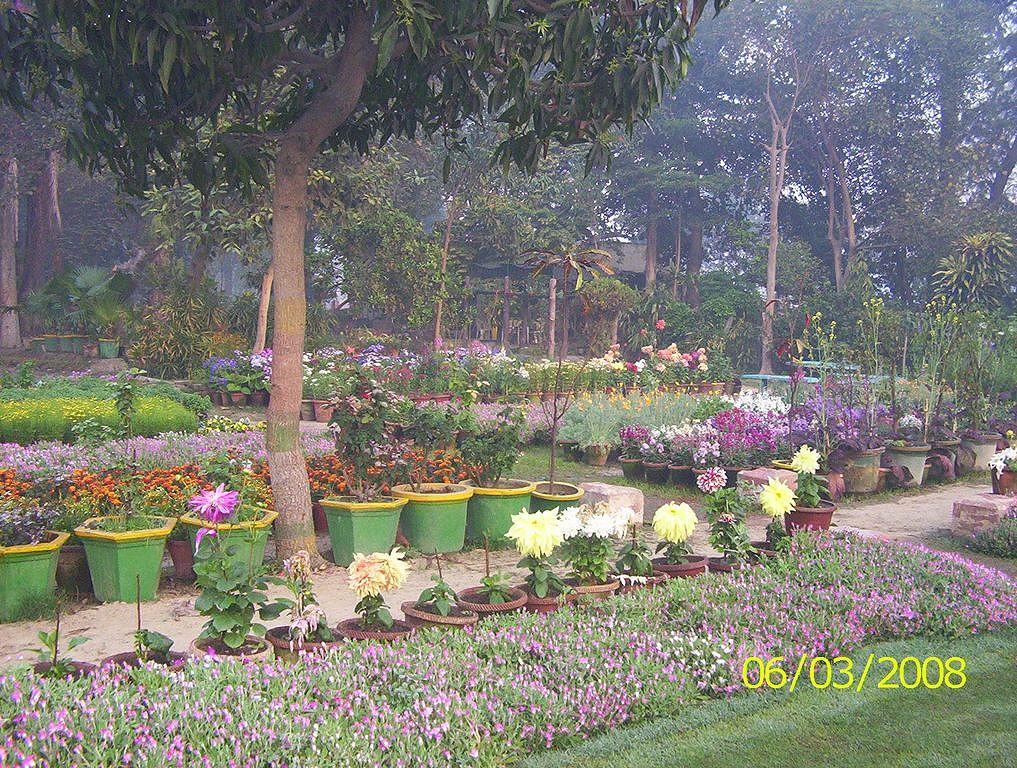
Mornings are still chilly, but one can certainly do without warm clothes durng the day. These flowers speak for themselves and say something different to each admirer. Interested ? There is a flower show on the 9th of March in the Company Garden. Must be at least a hundred year old tradition. If you have not been here for sometime, come and see how, slowly but surely the garden is steadily improving. If the gaps in the hedges are taken care of it will make a major improvement to the overall appearance. A resident horticulturist could do wonders here.
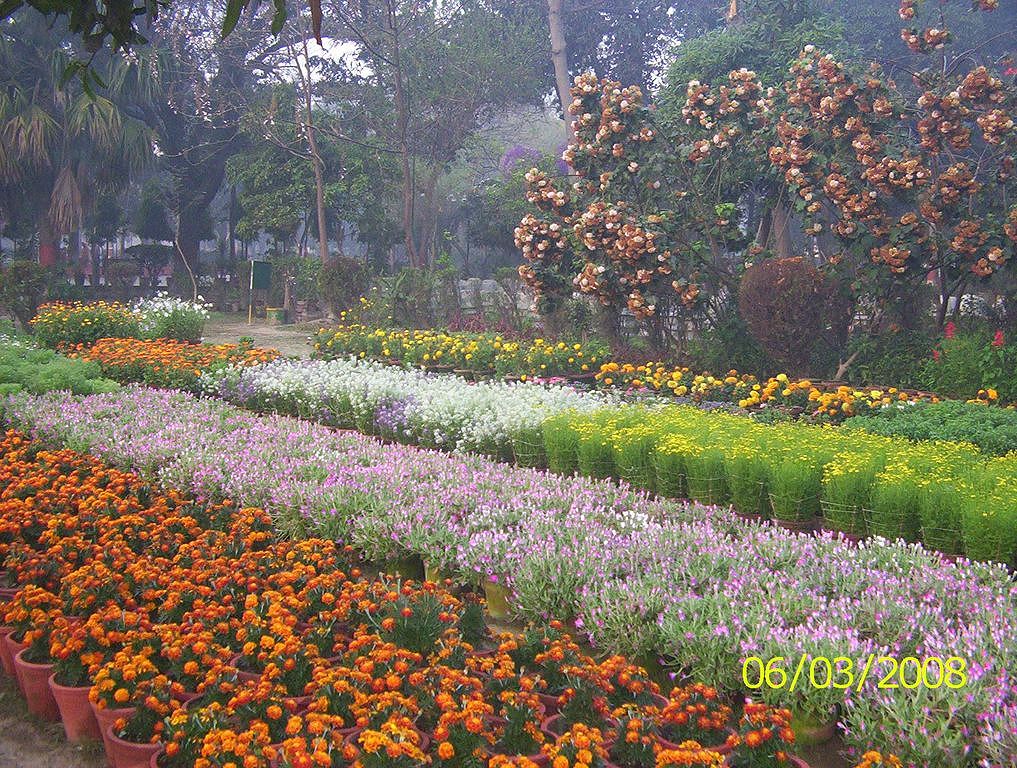

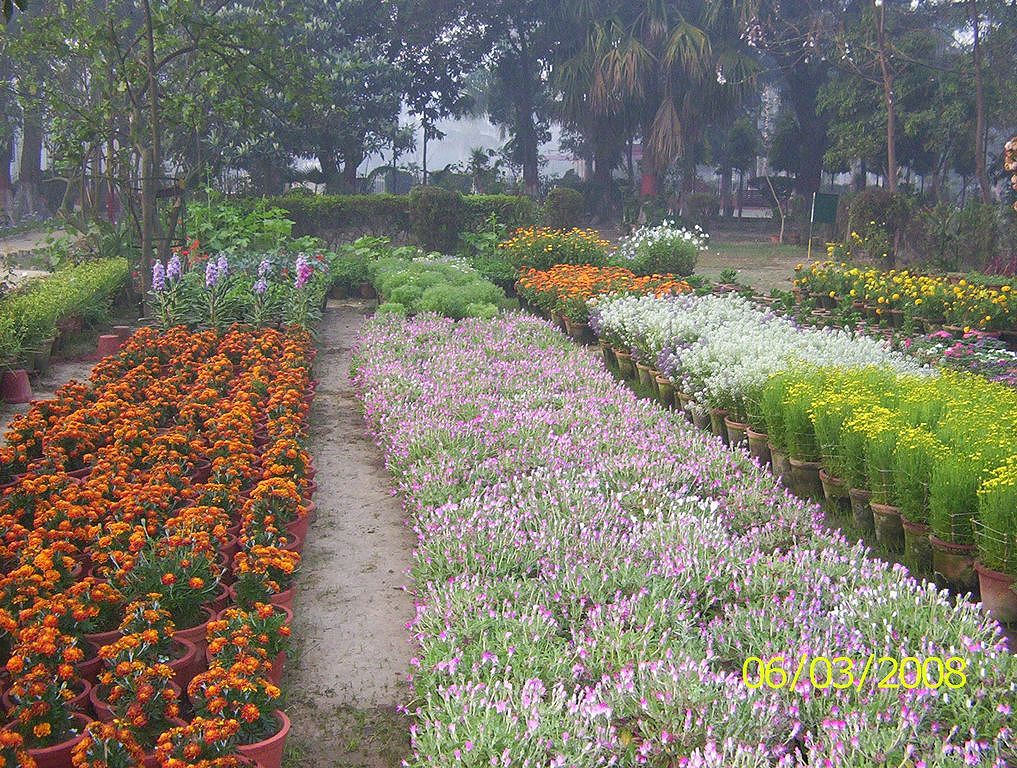
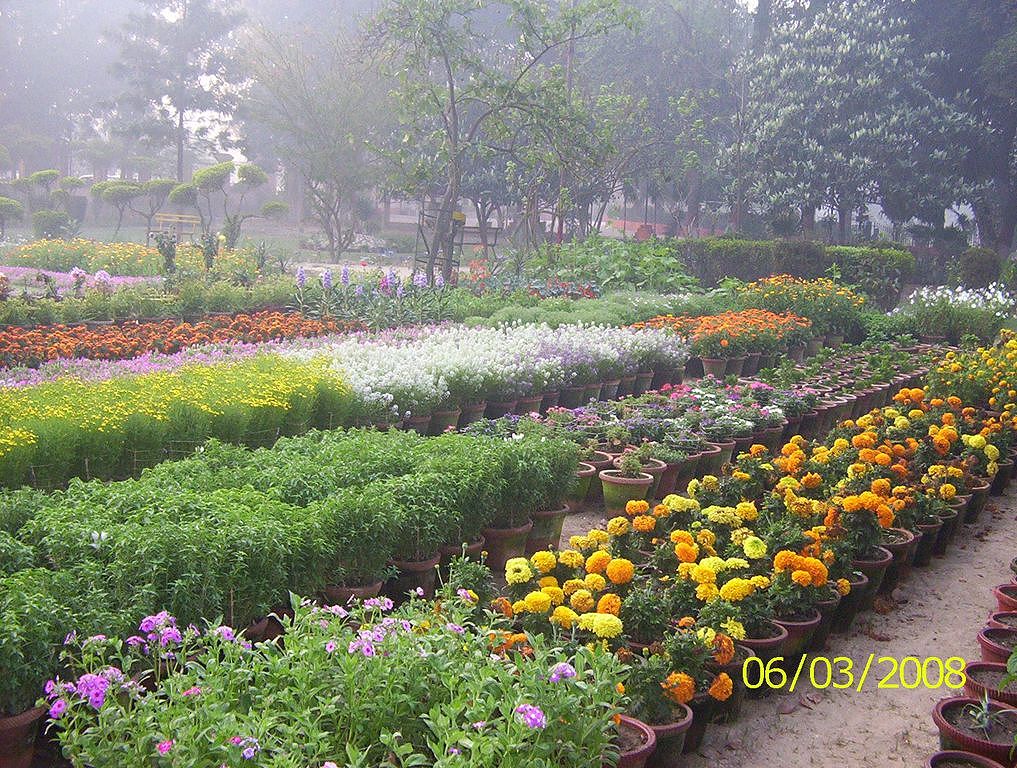
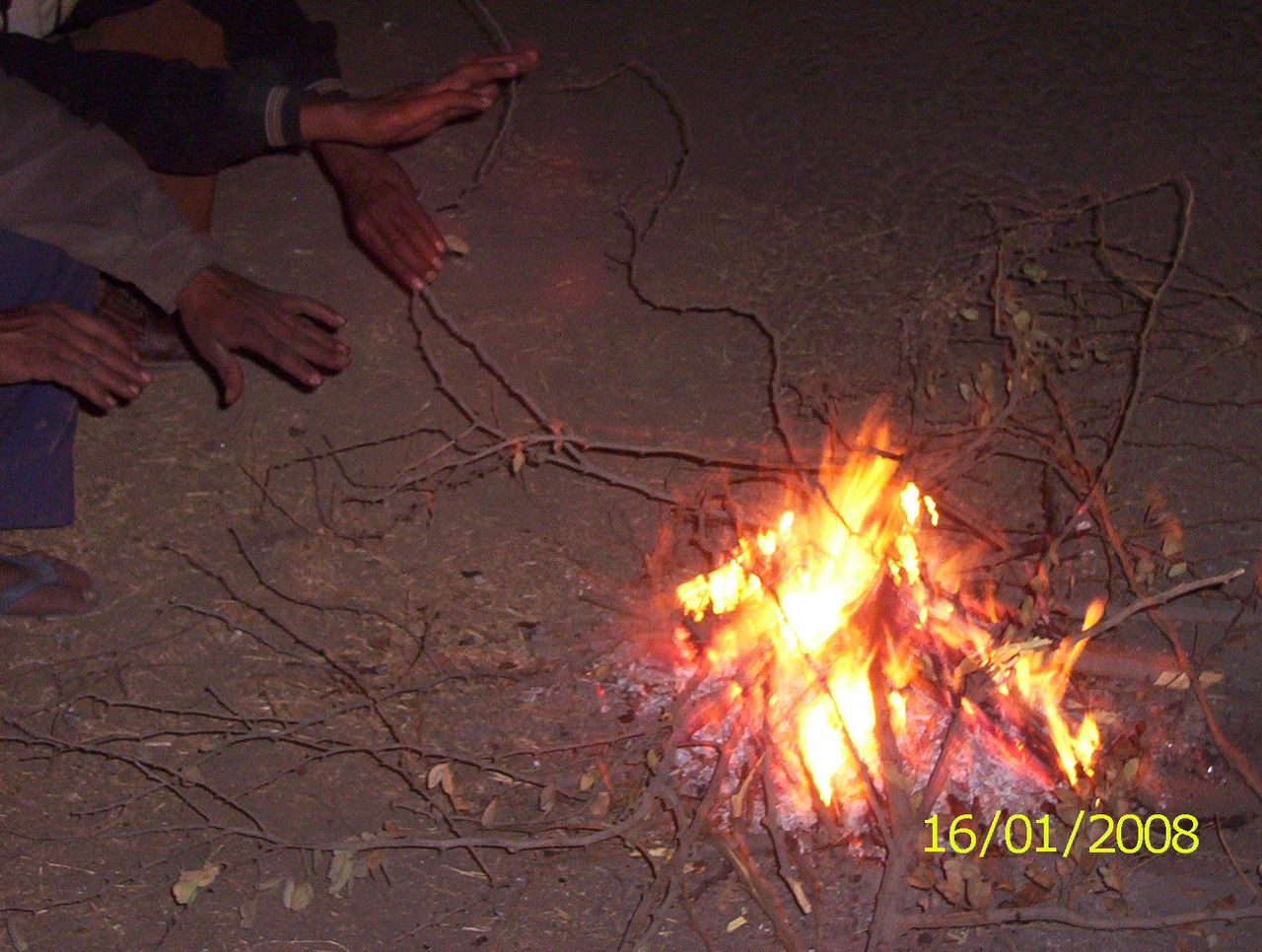
It is still wintry now ( February 8th) but things could change overnight. Of course winter does not bring joy to everyone. Especially those who have an all night vigil to keep. Near zero temperatures can be deadly for those out in the cold, in the middle of the night. Sure many have electric heaters, they are so much junk without electricity. And that is off for at least 8 hours or more every day, in a town of over a million (!!) people. There is a bright side to that too. Business in Inverters and Generators is doing OK.
February 10th: Basant Panchmi - there was a time maybe even just a decade back that one could see groups of people in yellow. Not many now ... But kite flying has not subsided. I saw a girl with a kite and hutchka in hand walking to an open area. The times are certainly changing.
And then one cannot ignore the BUDGET in February. The time when the Sarkari Bunch gets together, yet again, and decides unilaterally how much of your money is theirs. Of course income tax affects only a very small percentage of people. Excise just goes right across the board. Did you know that the excise in the US is close to non-existent? Now we have another flavour called VAT. Sure we get a lot in return . It is just not visible in Meerut. What with 8 hour power cuts, choked drainage, no dustbins, unswept streets .... !
There are so many paradoxical viewpoints about Taxes. Over the last century or so many icons have bitten the dust. Love, Marriage, Family, Community, GOD - nothing is sacred anymore except of course - Taxes. "Death and Taxes are inevitable". This is repeated even in the country which reached the moon.
What is even more wonderful is that 'superior' people are proud of professing their ignorance and disinterest in taxes. Very strange considering an enormous amount is utilised to make VIPs and VVIPs of clowns and criminals.
The word fiscal refers to collected money, and is derived from the Latin word fiscus for money basket. However just hear the budget speeches and you will get the impression that it belongs to the Gods who announce the budget.
When it comes to Common Sense attitudes towards Taxes we are not the only defaulters. The US is supposed to have the most rational administration systems. Since these were installed without the aid of Royalty and Nobility. Yet you will come across a line in material published there which says "those are your tax dollars at work". It is almost like pointing out at a ship just visible over the horizon. Considering the amount which is collected ( in the US ) the benefits could be more obvious.
Something is all right with the world... Did you see the awards ceremony of CNN-IBN? I rarely watch TV for more than a few seconds. This I watched spell bound. There is a lot of goodnes in the motherland and this will eventually overcome the evil - I have no doubt about that. Actually there should have been applause for CNN-IBN itself for choosing the people who most of us sincerely respect.
It is all about democracy. An enormous lot of the definition goes right back to Plato's Republic. In keeping with our uniqueness we now have a democracy unlike that in any other country of the world. It is wide enough in definition to embrace rule by criminals! Sorry there is no ..archy for that in English. Or perhaps we are not so unique. There is a saying which goes right back to Aesop's Fables (much older than Asokan Edicts) , which says "We hang petty criminals, the big ones we elect to high office". So if it was OK for the ancient and revered Greek civilization, it must be OK for us too. However we go to the extent of Criminals outnumbering good men. Click here to see a widely circulated Power point presentation
There is something about January in this part of the world. On a windy, sunny, wintry day you could certainly get the feeling that the entire planet was created this month, and all is right with the entire earth. There was however a new Year in the recent past which was extra special. The New Year of 2000. I remembered it on seeing a list in the World Almanac of 1999. The list was called the The 10 most influential people of the millennium. Here is the list.
The 10 Most Influential People of the Second Millennium
By Arthur M. Schesinger Jr.
Arthur M. Schesinger Jr. the Pulitzer Prize-winning historian and writer, is the Albert Schweitzer Professor in the Humanities at the City of New York. He served as special assistant to the president in the Kennedy administration.
As we anticipate the advent of the third millennium, The World Almanac asked Professor Schlesinger whom he considered to be the 10 most influential people of the second millennium. Here are the names he listed, in order of importance.
Name Born Died 1. William Shakespeare 1564 1618 2. Isaac Newton 1642 1727 3. Charles Darwin 1809 1882 4. Nicolaus Copernicus 1473 1543 5. Galileo Galilei 1564 1642 6. Albert Einstein 1879 1955 7. Christopher Columbus 1451 1506 8. Abraham Lincoln 1809 1865 9. Johann Gutenberg c.1397 1468 10. William Harvey 1578 1657
Don't know what your reactions are about the list. They are bound to be different from the year 2000, if you saw this list in the newspapers. Mine are these. I was amazed that Shakespeare is put at the head. No one born in the most turbulent century 1900 - 2000, makes it !! A mind boggling number of silent and unsung people who worked on the Silicon chip, Internet and myriad other modern developments are ignored - would any list be enough ? The Professor is/was(?) from a Humanities background - perhaps that is the explanation :). Where does one fit in the Wright Brothers, Henry Ford, Edison, Bell, Nikolai Tesla ... and other great men who have influenced modern life more than anybody else ? If impact on modern life is the criteria, then in my view Edison would head the list. Did you know that Henry Ford and Tesla both worked for a while at Edison's Labs?

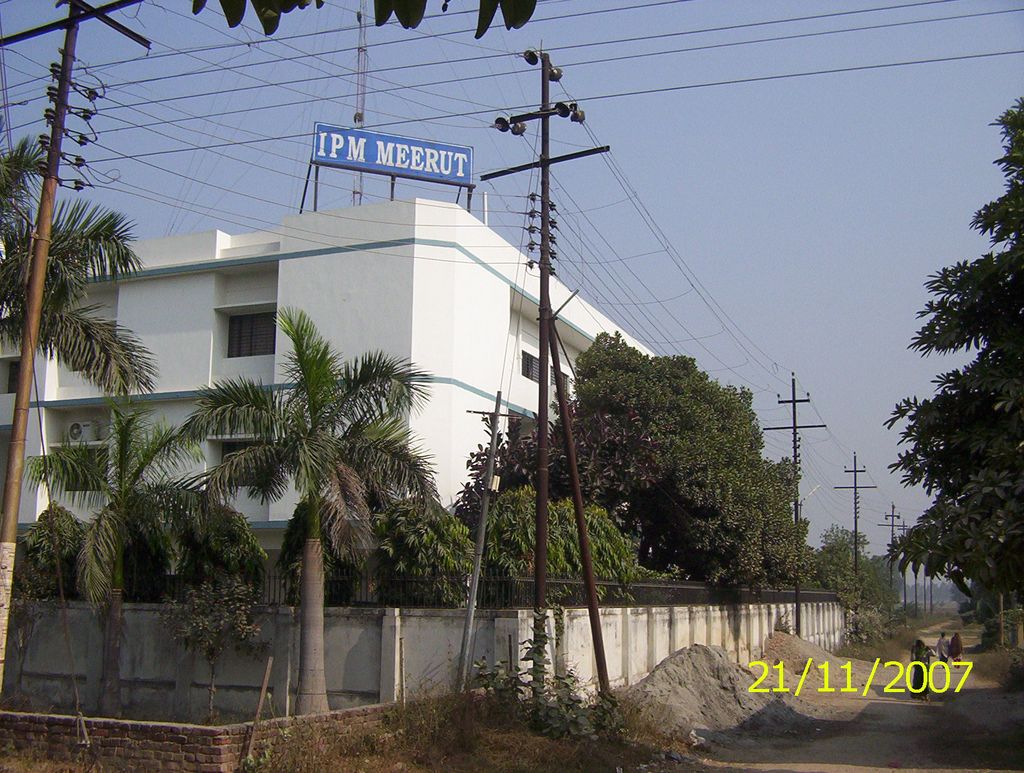
IPM Meerut's own Institute of Business Management. Slowly and steadily finding it's place in the sun. Everybody sits for the CAT not everybody gets in. So often it is merely a matter of chance. Well all is not lost. The list of employers visiting the institute is growing by leaps and bounds. Be warned getting admission is not easy.
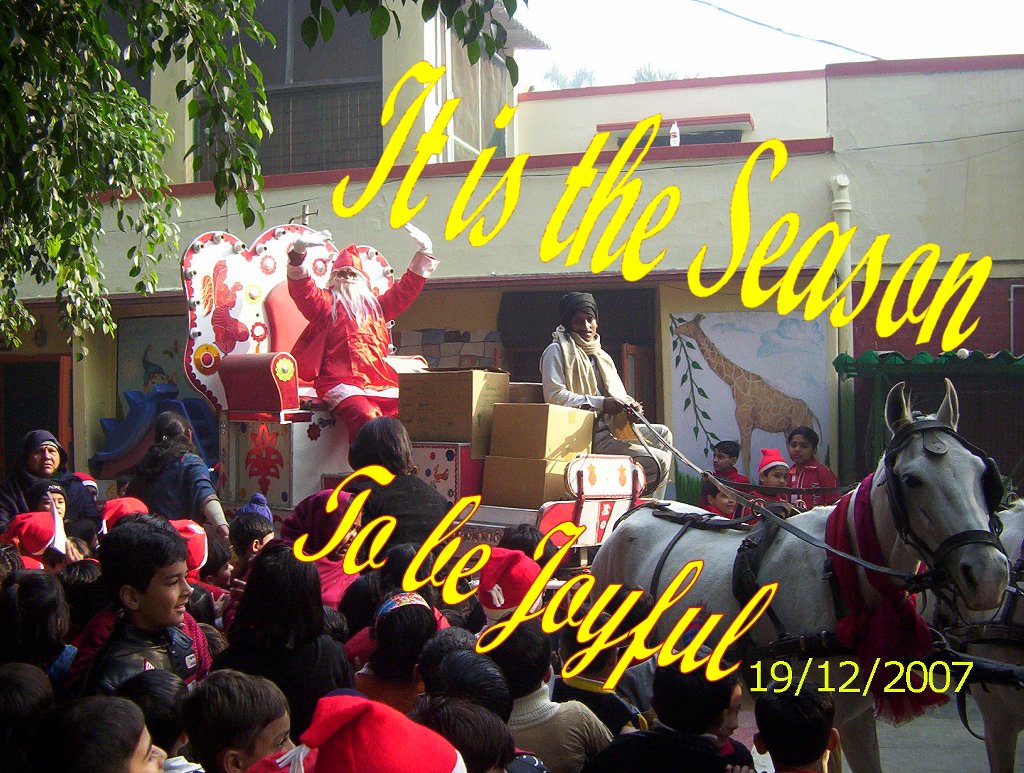
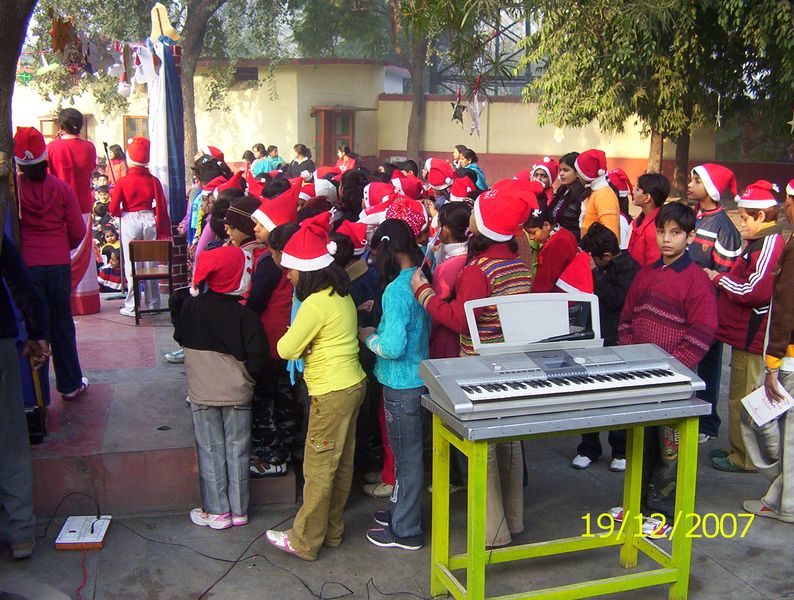
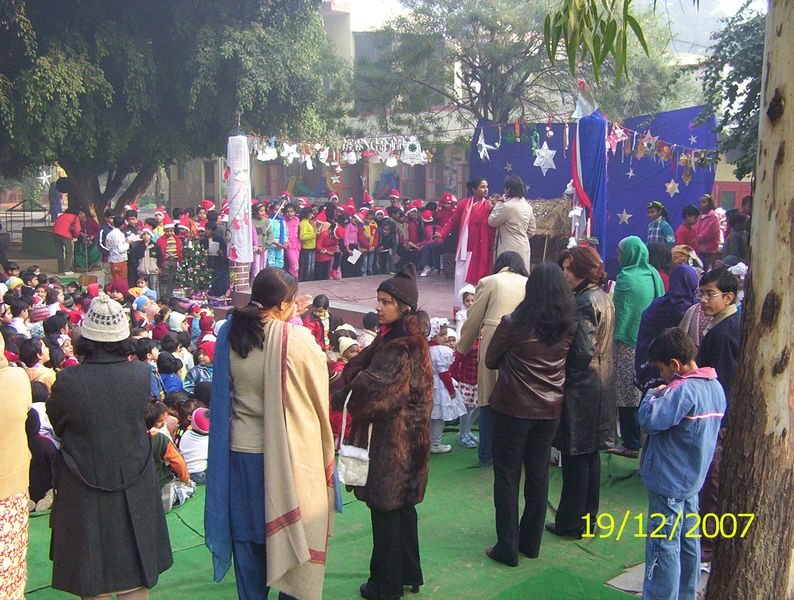
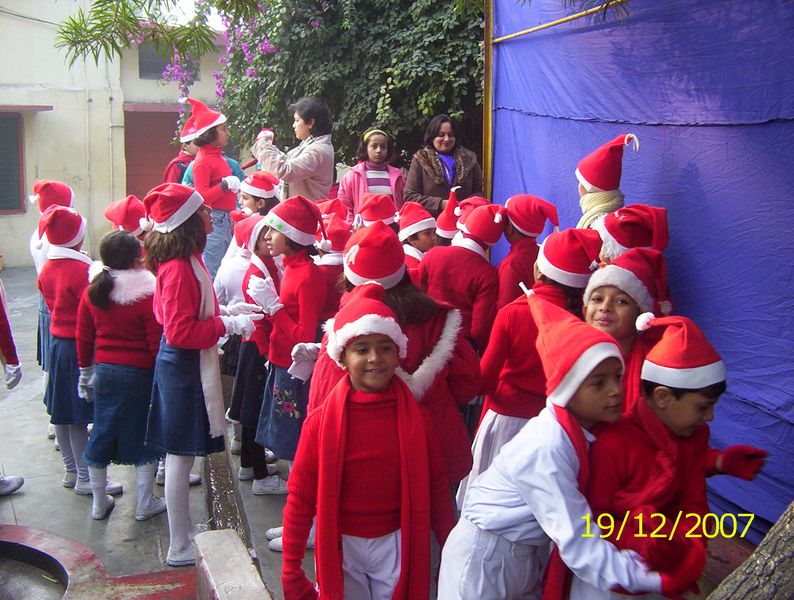
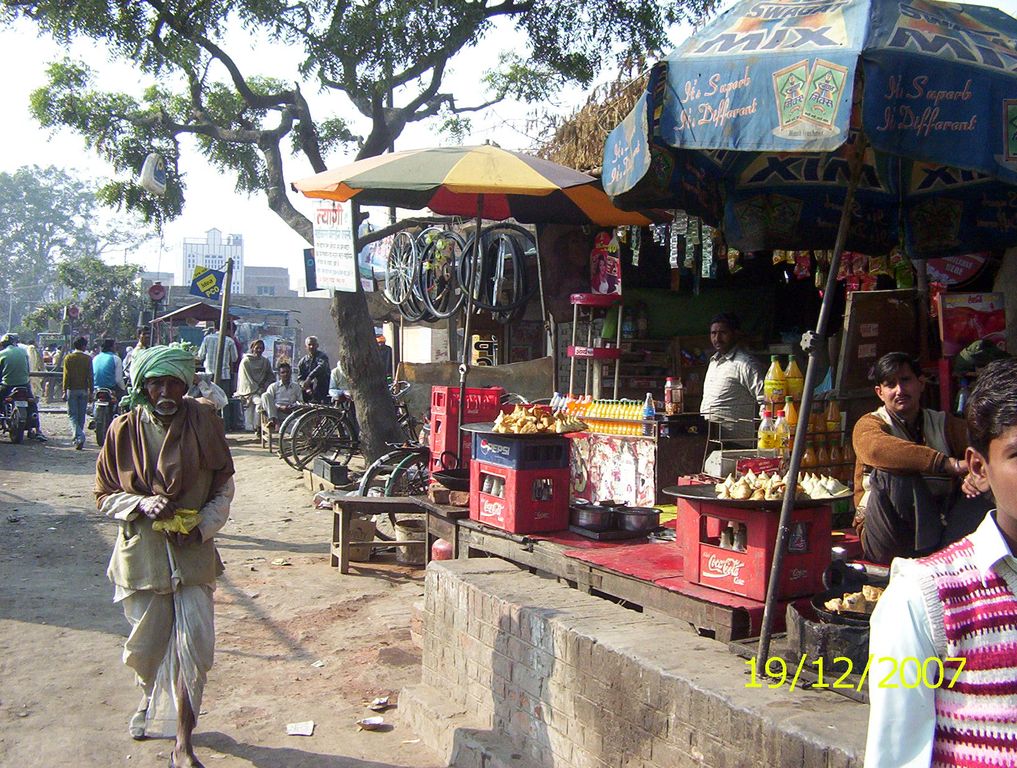
Christmas or no Christmas, the rhythm of survival stays the same. And it is certainly not laced with misery. For many there is no choice but to live life closer to the bone.
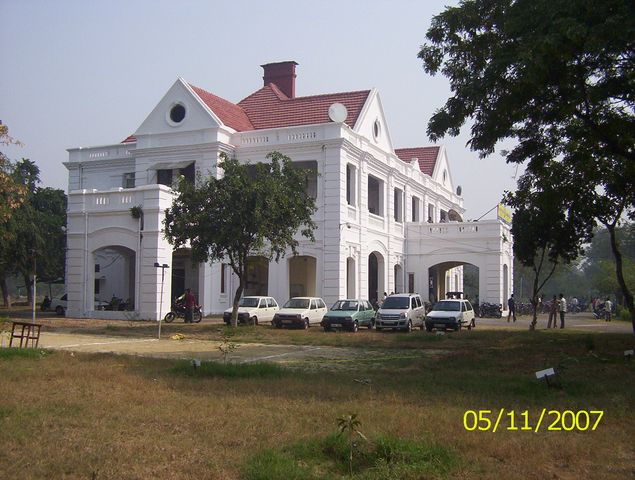
The Allahbad Bank has been lovingly repainted in colours which it had when the Duke of Connaught (1880s)lived here. INTACH is probably responsible - they have an enormous affinity for even the most trashy buildings of The Raj. And this is a fine building. ( A good example of how we don't let conflicting ideas bother us. This year is the 150th anniversary of the Mutiny. Considering that there was almost a riot when a peaceful group of British ex-soldiers/officers just wanted to put up a Tablet commemorating the presence and invlovement of the 60th(?) Rifles during the "Mutiny". Moreover the entire Cantonment - and Cantonments all over India - function under laws dictated before the Mutiny (1857)- - Old Grant 1836. And yes NO distinction between Garrisons(army only) and Cantonment(mixed residence) is made. In fact all the "Defence Land" notices you see ( some even in bazaar areas ) were put up in the 1980s 3 decades !! after Independence. You could always read this short text from an expert on empire Click here.This is quite a major point in our overall attitude about Defense. It is unlikely that bases dictated by the East India Company still have strategic relevance. And yes mere administration and maintenance of Cantonments is a substantial share of the Defence allocation.
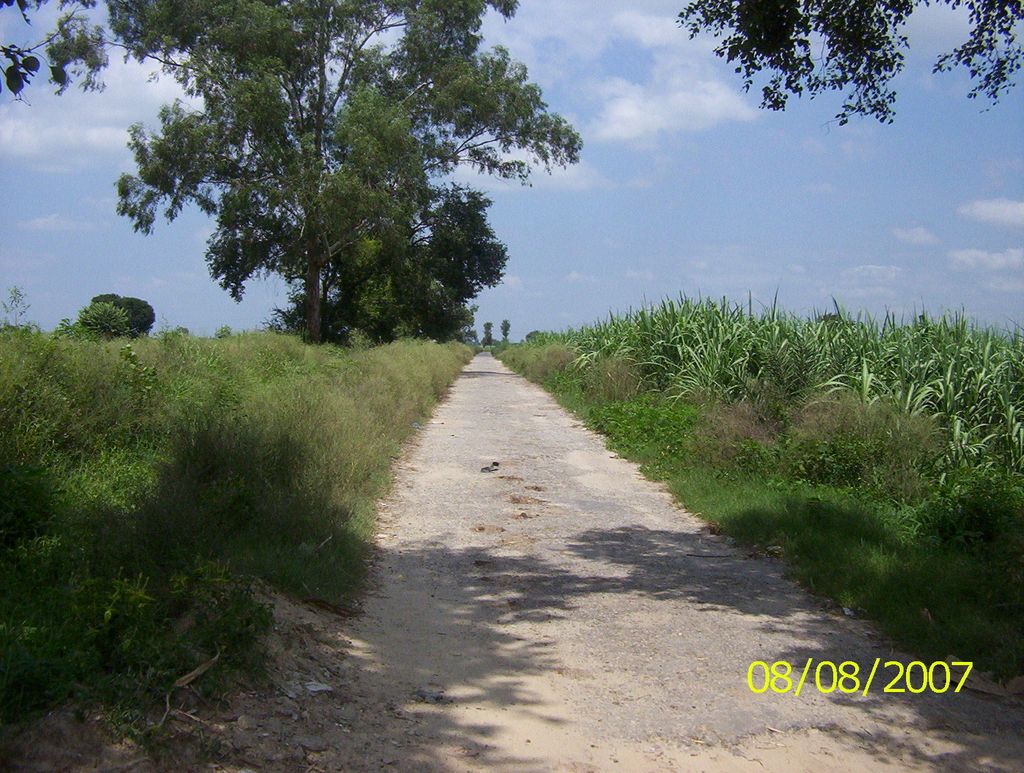
Surprise . This is how a lot of Western UP looks like. The population density here is more than other parts of UP. So where did all the people go. UP is India's most populous State, no doubt about that. However in our backwardness are we doing something right? The largest city does not exceed a population of 3 million (+/- .5million). There are only 3 or 4 towns/cities more than 1 million.
Such roads lead to our greatest and grandest people. They survive not only against the forces of nature and the planet but artificial, contrived ones - corrupt and unresponsive Government being one. Now they are not so heavily taxed, but The Raj was certainly financed by them. Through the Settlement system.
Back to the events of 1857. Neither "Mutiny" or "War of Independence" is correct. It is called the "Peasant Rebellion" by Eric Stokes in his book of the same name. What is hidden in abstruse tracts about the rebellion is that all Sepoys came from a rural background and knew well the exorbitant levels of taxation borne by the farmers. The Rajas had never been able to collect such huge amounts for the simple reason non-payment of levy did not result in confiscation of the very land which allowed farmers to live, that (confiscation) is what the Honourable gentlemen of the East India Company made into Law. You may want to read a very current and readable book by William Dalrymple - The Last Moghul. Completely anecdotal or maybe I missed something.
Here is an interesting episode dating back to the
mutiny...
Accordingly
a force of 300 Europeans , consisting of 100 men of the artillery and
200 of the 60th Rifles, were dispatched towards Hapur on the morning
of the 27th August, the last and greatest day of Muharram. The first
halting-place was selected with a view of allowing the troops to
remain near enough to Meerut to hear any firing , should any
disturbances occur there, and at the same time to frighten Walidad by
the advance of our troops. In the spirit of the instructions already
issued , the column had orders not to go near Malagarh nor to advance
beyond Hapur unless attacked or pursuing . It therefore took up up a
position near Hapur, and Mr. Wilson took advantage of the presence
of the troops to collect the revenue. The Rajput
landowners of Pilkhua sent in to say their revenue was ready and that
they were ready to bring it in, but begged that two messengers should
be sent to accompany them . Two men were sent , but as soon as they
entered the village were murdered by these very people of Pilkhua. A
portion of the column visited this village with exemplary punishment.
... page 183 of The Old Gazetteer of Meerut 1903..
Earlier reference to this at this site.
Rural folk were condescendingly called peasants in medieval Europe. Due to the phase lag due to percolation such attitudes still exist in India specially among those suffering from westernisation by induction. However the point is such people are not influenced by artificial luminosity and aura. In other words they are more likely to call a spade a spade, or a thief a thief.
The Chakkar of Empire and colonialism was called The White man's burden , a phrase which has lost its meaning even in the West. Strangely not even the most vehement critic of colonialism ever pointed out that the burden included a pretty heavy treasure chest :) .
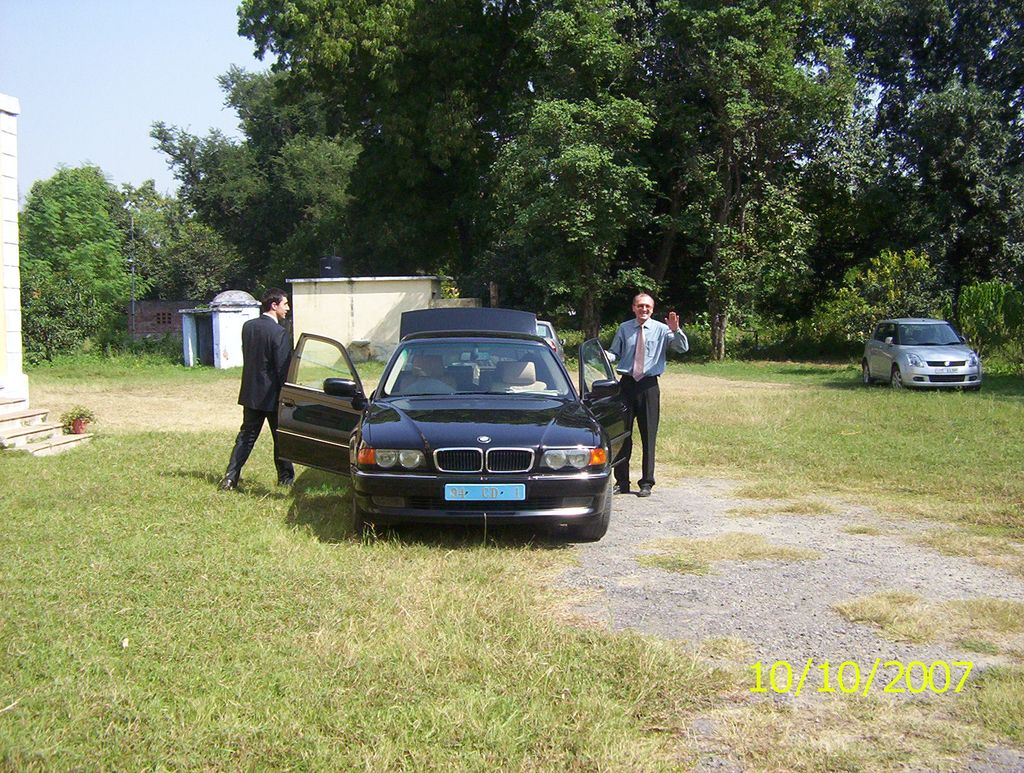
Even in the 150th anniversary of the "mutiny" there is no flood of visitors to the cemetery. However the number is certainly more than other years. They are obviously mostly British. All have had ancestors with links to British-India. Mostly ex or serving army men of a wide range of ranks. And all above 50. That said , it was certainly a surprise to hear that the current Ambassador of Ukraine to India was visiting. He arrived in a BMW surrounded by many local policemen . He was under the impression that at the start of the mutiny most people in the congregation were killed in St. John's Church. Many have this impression. Probably created by a forgettable and forgotten movie called Junoon. The Church registers say no service was held in the church on May 10th, 1857 and services were restarted a few weeks later. Note: There is a tablet in the church saying it was the first in the North-Western Provinces. The Church was consecrated by a Bishop Heber. Who wrote an account of his long journey to Meerut in Narrative of a Journey through the Upper Provinces.
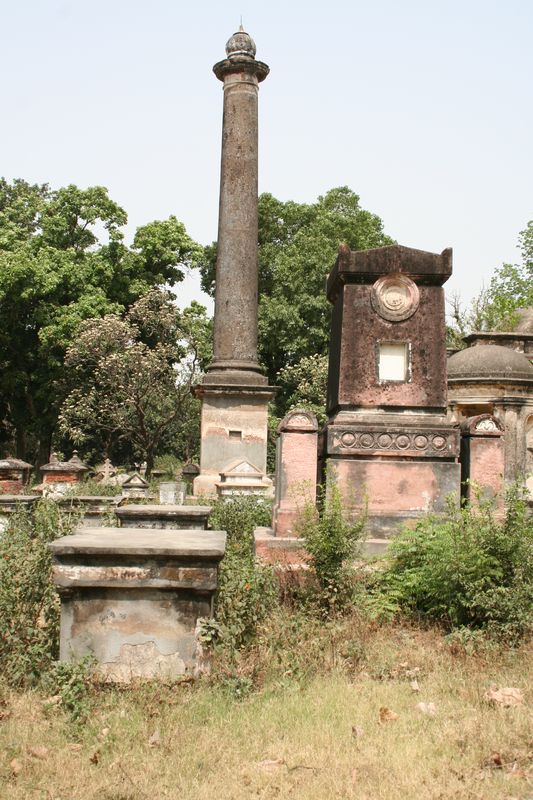
It is interesting to examine some major events just prior to the mutiny of 1857. Nepal was attacked in 1814.( Under the treaty of Sigauli they procured Mussoorie, Simla , Nainital. Darjeeling was extracted in 1835 some 21 years later ) . Macaulay's speech ridiculing Indian Knowledge etc. came out somewhere in 1833? And that marks the start of the end of a certain degree of British - Indian social Interaction. Graves prior to 1833 often have a distinct Indian influence to them. After 1857 there were no more annexations / battles internally ( prior to that there may have been one in a month or two* ). They just had to extend their demands and the Rajas Maharajas would just bend over backwards. The Princely States really receded after Independence. However before Independence they had paid huge sums to the British. They finally became paupers after Indira Gandhi withdrew their Privy Purses. The defeat of the Gurkhas really gave a lot of boost to the EIC morale.
*If you stay at Carlton's Hotel in Happy Valley in Mussoorie you can see a number of paintings depicting battle scenes in various villages. Some of these villages may now have vanished.
The tower which marks Gillespie's grave in St. John's cemetery, gives 31st October 1814 as the date of his death. And therein lies a tale which seems to have been told only in Nepal. Not of Gillespie and his East India Company 'Army' but of the people he attacked. A settlement at Kalunga near Dehradun of Gurkhas in which almost 30% were Women and Children . Gillespie took about 4000 men from Meerut around 23rd of October ( the official invasion ordered by Hastings was to start on November 1st ). The settlement of Gurkhas numbered only about 700! The encounter lasted almost 5 to 6 weeks. There are detailed letters dating from that time which make the long-drawn battle come alive, after close to 200 years. That settlement contained perhaps 300 to 400 Gurkhas who called themselves "The Malechha - Kalanala Company ". The British were called Malechhas by the Nepalis and Malechha - Kalanala roughly translates to "The company which is the fire of death to the British ". Just 43 years later the Gurkhas with the Sikhs sided with the British and were instrumental in crushing the "Mutiny". Six letters which were written while the battle was on were found by the Regmi Research foundation and are part of a project which lasted 20 years. Read those by clicking here .
This tower is a landmark of sorts in the immediate region. The more knowledgeable know it as Gillespie's grave. What even the most knowledgeable don't know is that it is also a memorial to the battle that created the legend of the Gurkhas. About the confrontation in which he was killed. It is sheer chance and the power of the Internet that one finds enormous amount of detail for this one battle ( very prolonged ) - thanks mainly to the Regmi Research Foundation which took 20 years to translate material into English with support from an US University. The reasons why this ( details of the battle ) was kept undercover need not be explained. Type Gillespie in the Google Books box below to get an account of the Vellore battle in Gillespie's own words.
Thinking of visiting India for mutiny related sites or general site-seeing then you could do worse than click here
Here is the excerpt Pages 559 - 561 of the UNITED SERVICES MAGAZINE of 1840 . If you can get your hands on this particular issue (it can be downloaded from Google books (40 MB!)), you will get a good idea of the 'high' that pervaded the British psyché at that time. The account relates to 1806. Still a few years before 1812, which, with the defeat of Napolean was a major landmark in the ascendancy of the British. Click here to read.
Also from the same magazine (1840) is a discussion about muskets / rifles . I am not sure of what distinguished one from the other. Or maybe they meant the same thing. My impression is that rifles used cartridges and muskets the the shot and powder had to be filled in manually. Very interesting all the same since these were the kind of weapons that were used during the 'mutiny'.